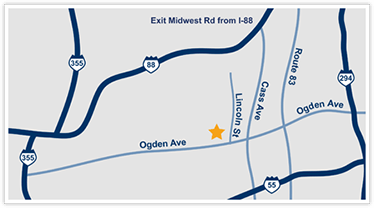What Does Over Spot Mean When Buying Gold?
Societies around the globe have prized gold as a precious metal throughout human history. This is still true today, and gold is often seen as a strong investment that diversifies your portfolio and helps manage risk. Whether you’re selling precious metals from your collection or looking to purchase gold for yourself, it’s important to understand its current value, which is determined in large part by spot price.

What Is Spot Price?
Spot price is the current market price for gold. This is the base price at which the commodity can be bought or sold, but this is rarely the price you’ll actually pay. Spot prices for gold and other precious metals can change by the minute during market hours, meaning they’re continually changing Sunday through Friday between 6 p.m. and 5:15 a.m. EST.
You can find the current spot price of gold online or in a number of apps that are designed to track this useful information. Savvy investors may be able to predict trends in gold’s spot price and time their purchases accordingly to buy when the price is at a low point and sell when the price is high.
Factors that influence the spot price of gold include:
- Supply and demand.
- Political and social events.
- Foreign and domestic exchanges.
- Market conditions.
What Does It Mean To Buy Gold Over Spot?
Buying gold over spot means that you’re paying more than the current spot price. You’ll almost always purchase gold over spot because you’ll rarely be able to buy it without the additional associated costs. Gold’s spot price applies to the raw, refined metal when purchased in bulk and doesn’t account for the cost of anything that happens to it before reaching the dealer or individual buyer. Since everyone in the industry is purchasing over spot, the most important question is how much over spot you will go.
Some gold dealers mark up their products based on a percentage. In this case, you may find that their gold bars are sold at 10% over spot. This means you’ll pay spot plus 10% at the time of your purchase. Though you will always pay over spot, the exact amount will differ since you’re calculating a percentage of the current spot price.
Some dealers prefer to add a set value to the spot price, such as $10 per gram regardless of the spot price. If you’re navigating this kind of deal, you’ll notice that the markup represents a higher percentage of the gold price when the market is poor and represents a much lower percentage when the spot is high.
What Is the Premium Price for Gold?
The premium price for gold is the spot price plus business costs such as fabrication, distribution, storage, marketing, and the efforts expended by the dealers. Everything from production labor to customer service comes at a price, and this gets rolled into the premium you pay for gold. Its numismatic, collectible, or rarified state may also increase its premium.
The price over spot doesn’t necessarily translate directly into dealer profit. If the spot price is $200 and you paid $230, this doesn’t mean that the seller pocketed that $30. A large entity like the U.S. Mint may purchase gold close to spot for minting. Distributors will then pay a premium to cover the cost of minting the coin. Coin shops will pay a premium for the distributors’ efforts. You pay a premium to cover the coin shops’ expenses of storing, marketing, and selling the product.
What Does a Gold Spot Price Chart Show?
Learning how to read a gold spot price chart is the first step toward truly understanding this key number. These charts display the fluctuating spot price of gold over a set period. Most tools allow you to adjust the chart’s time frame so you can closely examine a particular period of time. If you’re interested in short-term trading, you might focus on a daily or hourly chart. If you’re buying gold as a long-term investment, you might choose a monthly or yearly chart.
For the most in-depth information, you should use a candlestick chart that shows open, close, high, and low spot prices within a particular time period. For a more generalized look at the spot price of gold, you can use a line graph that shows overall price movements in the desired time frame.
Some gold spot price charts display trade volume. This can offer valuable insights into the liquidity of gold. When trade volume peaks, gold is in high demand. As the volume decreases, so too might the spot price. As you familiarize yourself with the precious metals industry, you’ll begin to see connections between political events or market conditions and gold’s spot price. Evaluating these factors in depth will help you begin predicting trends.
How Can You Negotiate the Price of Gold?
With an understanding of gold’s spot and premium prices, you may be able to navigate some delicate negotiations during your next gold purchase to get the best deal possible. Use your newfound knowledge to back your request for a lower price. Perhaps you now know that gold prices are positioned to drop, so you could angle for a slight discount because the dealer is only likely to see the item’s value fall in the coming days.
Where Can You Sell Your Gold?
If the spot price is soaring and you’re ready to cash in, you can sell your gold to a qualified dealer and turn that commodity into cash. At Americash Jewelry & Coin Buyers, we’re prepared to give you a great price for your gold coins, bullion, or jewelry. Contact or visit us for an offer today.
gold and black metal tool by Jingming Pan is licensed with Unsplash License



